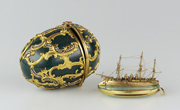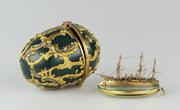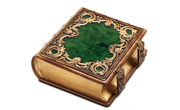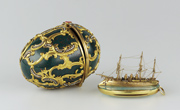The Constellation
Art Tour Guide
Art Tour Guide
The Constellation
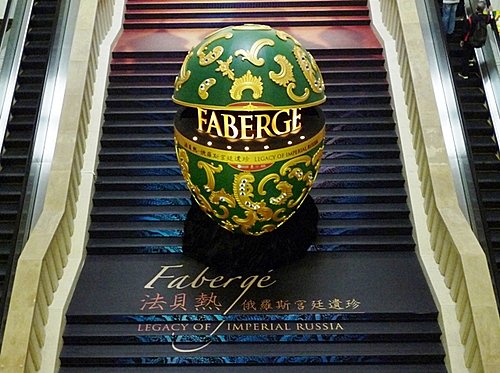
Let’s start with the Easter eggs
Faberge produced Easter eggs on commission from the last two Tsars of the Russian empire, Alexander III and his son Nocholas II. From 1885 to 1916 (over 31 years), the House of Faberge completed 50 eggs for the Tsars, but 8 were lost during the Bolshevik Revolution or perished or sold by the Bolshevik abroad to gain foreign currency. Only 42 survive today, and 10 are in Kremlin Museum where 3 are now on display here. The others are in the collection of Queen Elizabeth II (the Queen of England), some in American museums, some now belong to the Prince of Monaco, Albert and some are in private collection.
10 years ago, a Russian billionaire Victor Vekselberg bought nine eggs from the private collection of another US billionaire Malcom Forbes and that was a very important event because those nine eggs returned to Russia.
The House of Faberge produced 50 eggs, last one dated 1916. So what happened to the egg made in 1917? It was thought to be unfinished and lost forever. But it turned out that last egg for many many years was in fact held by the Mineralogical Museum, but just that nobody knew it belonged to Faberge. Parts of the egg were stored in the museum somewhere. My colleagues and I were part of the discovery process and we helped the Fersman Mineralogoical Musuem to attribute this unfinished egg to Faberge. We have seen the sketch of this last Faberge egg before and so we knew how it should look like. This egg was commissioned by Nicholas II as a gift to his wife to honour the heir to the throne Tsarevich Alexei. It was unfinished and stored in 3 parts.
It was meant to be more luxurious than all other eggs and was supposed to be encrusted with diamonds and it featured the constellations you can see on the top, including the constellation under which little Alexei was born. In the middle, there was supposed to be a clock with mechanical movement and the stand shaped like clouds was supposed to be a jade stand and feature little angels.
So why wasn’t this egg completed? If you know the history, in 1917 the Bolshevik revolution broke out, so the whole Tsar family was arrested and this is the only imperial commissioned order that Faberge didn’t finish. The House of Faberge was nationalized and Carl Faberge fled to Switzerland. In 1927, the son of Carl Faberge, Agathon, planned to secretly flee from the Soviet Russia and gave the three fragments of this last egg to his friend who was the director of the Mineralogical Museum, Mr Fersman, for safe keeping. This egg is beautiful even in its incomplete form and so was a sad reminder of the end to the House of Faberge and the end of the Russian Empire.



























